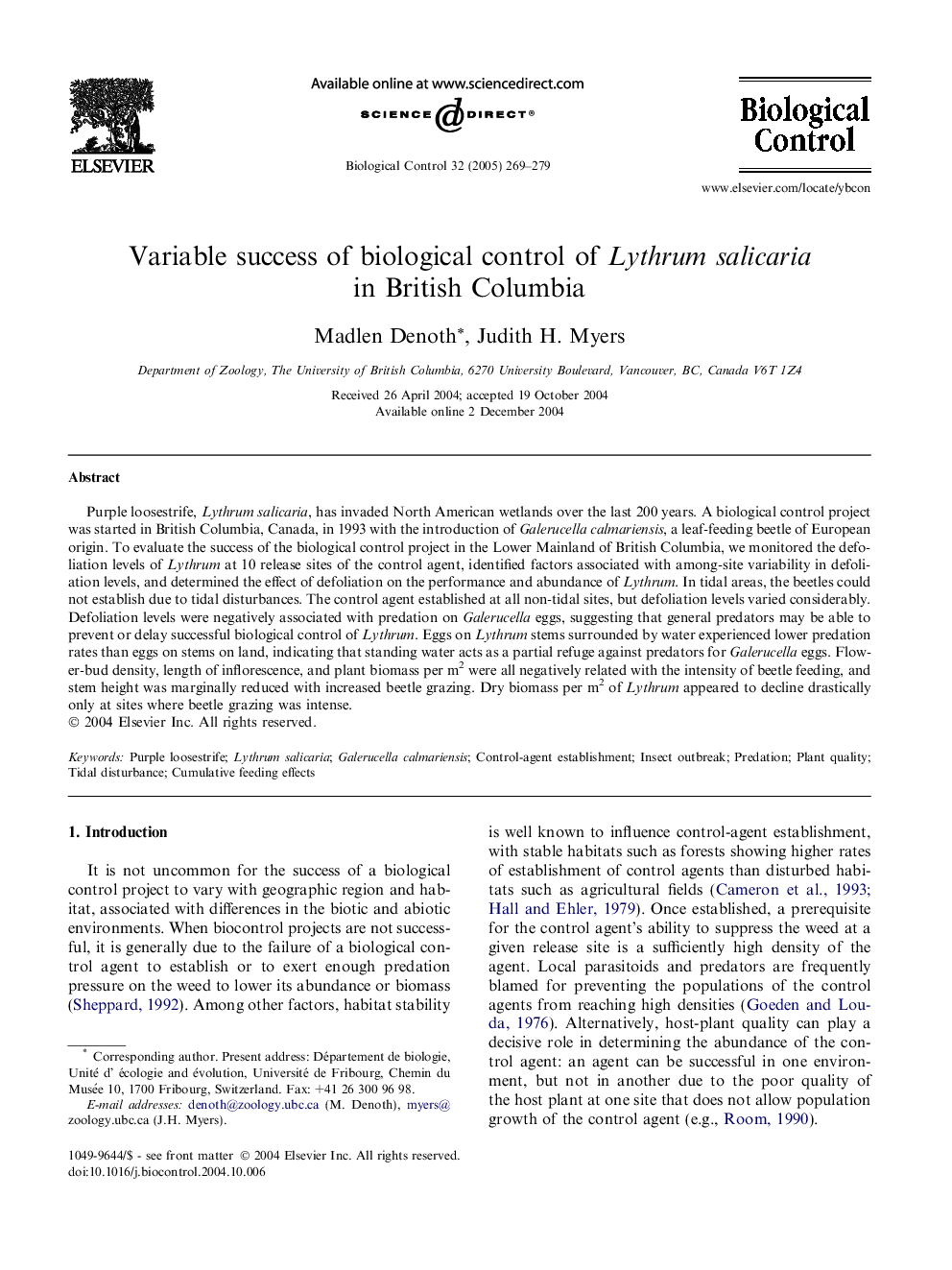| Article ID | Journal | Published Year | Pages | File Type |
|---|---|---|---|---|
| 9472041 | Biological Control | 2005 | 11 Pages |
Abstract
Purple loosestrife, Lythrum salicaria, has invaded North American wetlands over the last 200 years. A biological control project was started in British Columbia, Canada, in 1993 with the introduction of Galerucella calmariensis, a leaf-feeding beetle of European origin. To evaluate the success of the biological control project in the Lower Mainland of British Columbia, we monitored the defoliation levels of Lythrum at 10 release sites of the control agent, identified factors associated with among-site variability in defoliation levels, and determined the effect of defoliation on the performance and abundance of Lythrum. In tidal areas, the beetles could not establish due to tidal disturbances. The control agent established at all non-tidal sites, but defoliation levels varied considerably. Defoliation levels were negatively associated with predation on Galerucella eggs, suggesting that general predators may be able to prevent or delay successful biological control of Lythrum. Eggs on Lythrum stems surrounded by water experienced lower predation rates than eggs on stems on land, indicating that standing water acts as a partial refuge against predators for Galerucella eggs. Flower-bud density, length of inflorescence, and plant biomass per m2 were all negatively related with the intensity of beetle feeding, and stem height was marginally reduced with increased beetle grazing. Dry biomass per m2 of Lythrum appeared to decline drastically only at sites where beetle grazing was intense.
Keywords
Related Topics
Life Sciences
Agricultural and Biological Sciences
Agronomy and Crop Science
Authors
Madlen Denoth, Judith H. Myers,
